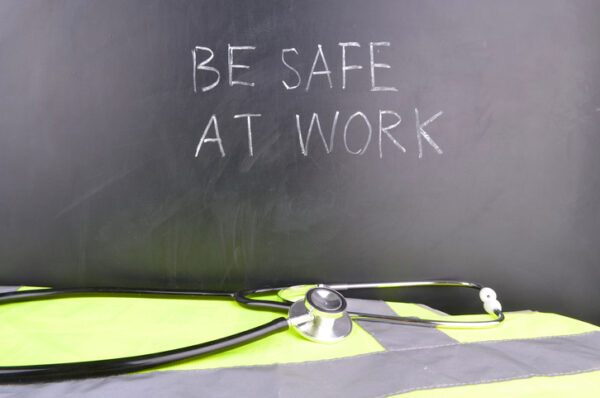
Workplace violence is on the rise everywhere. It threatens every industry and size of organization—but has reached epidemic levels in the healthcare industry. In fact, before the pandemic hit, hospitals were already experiencing an unprecedented increase in violent incidents.
The Association of American Medical Colleges reported that between 2011 and 2018, violence against healthcare workers increased by 63 percent. Recently, an August 2022 report from the American College of Emergency Physicians revealed that 45 percent of emergency physicians reported violence in the emergency department has greatly increased over the past five years. Nurses are suffering, too. The American Journal of Managed Care reported that during the pandemic, 44 percent experienced physical violence and 68 percent, verbal abuse.

With the Rise of AI, What IP Disputes in Healthcare Are Likely to Emerge?
Munck Wilson Mandala Partner Greg Howison shared his perspective on some of the legal ramifications around AI, IP, connected devices and the data they generate, in response to emailed questions.
A different level of hospital violence
Most of us never hear these stories of hospital assault, abuse, and gun violence. Having worked in law enforcement, narcotics, and hospital security for more than 30 years, in cities with some of the nation’s highest crime rates, I’ve experienced these statistics.
Not that long ago, hospitals were considered safe places to be—sanctuaries for healing. Doctors and nurses were more respected and trusted. Even then, it was not unusual for patients or a family member to act irrationally and hit or verbally abuse their caregiver. Some of this is understandable and it’s also human nature: patients typically arrive in a lot of pain. They are vulnerable and fearful. The last thing they want is a doctor or nurse poking at them. You can understand how these provocations can start and quickly escalate.
The same pain, fear, and anxieties are still present today, but behaviors have shifted. It’s as if the outside storm of increased violent behavior and weapons—has come inside. It is no longer just high-emotion (irrational) behavior. Those coming in now might display premeditated (calculated) behavior. Emergency department staff have told me their biggest fear is that the next person coming through the door might be a mass shooter. That’s untenable. Everyone suffers in conditions like this.
When violence in general—including gun violence—goes unchecked in any hospital setting, the physical and psychological impact can be severe, lasting and even devastating. Beyond injuries and tragic loss of life, the fallout from unchecked violence creates worker anxiety, loss of productivity and workdays, and significant legal and reputational losses.
Protecting hospital environments protects everyone
All of this has forced needed change. The epidemic level of hospital violence has catalyzed the Joint Commission Research and OSHA Alliance to require that hospitals now have “a workplace violence prevention program led by a designated individual and developed by a multidisciplinary team.” These new rules, introduced in January 2022, include elements of performance that hospitals must meet to stay in compliance—and annual grading is being conducted by the Centers for Medicaid and Medicare Services (CMS).
These new elements of performance rely on hard data, a deliberate move away from anecdotes and incomplete or inaccurate data.
For hospitals and health systems focused on saving lives and providing patient care, knowing where to start in creating a violence prevention program can be overwhelming. Like any major project, it’s important to focus on one piece at a time.
Here are four recommended workplace violence prevention steps:
- Establish a committee.
The first order of business is dedicating a workplace violence prevention champion to organize a multidisciplinary team into sub committees. Once the committee is in place, they should conduct a safety and security audit of the entire hospital campus, including parking lots. Committees can then review all existing data to look at the number and type of previously-reported incidents that led to a staff member’s physical or emotional harm. And they can begin mapping patterns. And finally, the committee should review and update their workplace violence policy to make sure there is system wide compliance in reporting.
- Let the hard data shape new policies and procedures.
With the hard data in hand, including patient safety data, workers compensation reports, and public safety reports, a true picture of when, where, and how workplace violence is occurring can be determined. Make sure that the data is accurate and that there is a seamless procedure for future reporting and review. The benefit of letting the hard data paint the true picture, the safety team can far more confidently identify the policies and procedures that fit their unique environment.
- Create a reporting process—and commit to it.
It is imperative that hospital staff not only feel comfortable reporting issues, but trust that they will be handled. From the very beginning, the safety team must back words up with action. It’s all about trust. Hospital co-workers need to know that their hospital takes workplace violence seriously. They need to feel protected by real, tangible policies and products that add to their security. And, they need a reporting process that is streamlined and gets results—not just another process that requires more of their time with no outcomes that directly benefit them.
- Implement policies that include people, process, and technology
Security requires all three; one of those elements on its own is not enough. Consider a building with an advanced weapons detection system but no security staff to monitor, or no processes in place to address an individual who enters with a firearm. Teams must look at each component independently and as part of the overall plan. For example, what role do individual employees or departments play in a hospital’s security, and is new training required? How are new safety protocols initiated and managed? What’s the right balance between being Emergency Medical Treatment & Labor Act compliant and safety centered.
Conclusion
We should be able to trust that our local hospital is a safe place to be when we are at our most vulnerable. And our attending staff deserve to feel safe and protected, to not be anxious while they are caring for us or a loved one.
When we take actions like those above to create workplace violence prevention programs that are CMS compliant, we are proactively mitigating workplace violence. Hospitals that protect their own are able to better retain exceptional staff, deliver health care excellence, and improve their overall healthcare outcomes.
Photo: s-c-s, Getty Images
Jason Grellner is VP of Healthcare at Evolv Technology, the leader in AI-based weapons detection security screening for public venues including hospitals, schools, companies, and iconic venues throughout the U.S. Jason joined Evolv in 2023 to expand its mission in the healthcare market. Jason brings more than 30 years’ experience in law enforcement, international narcotics, and hospital security, most recently serving as executive director of Public Safety for Mercy Hospital System in Missouri.














